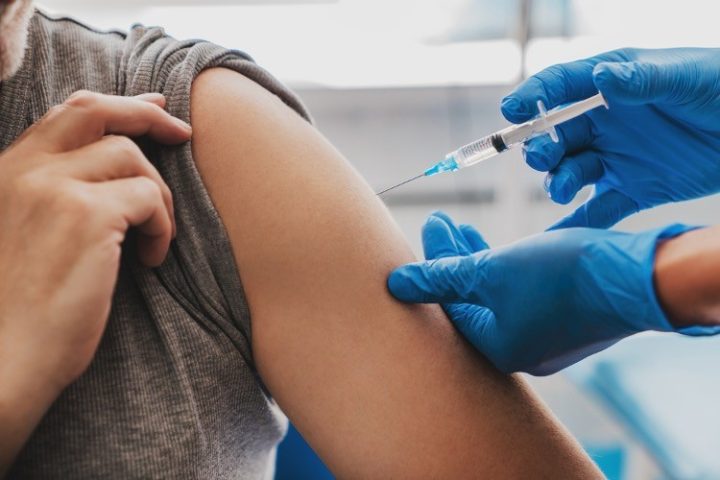
In some authoritarian or theocratic countries, the word of the supreme leader is law, but, luckily, that not yet the case in the United States. As unconstitutional and draconian as it is, President Biden’s vaccine mandate for companies that employ 100 or more individuals is still, legally speaking, non-existent.
On Tuesday, however, one of the final steps towards its legal embodiment was made, as the Labor Department’s Occupational Safety and Health Administration (OSHA) provided a draft of the president’s emergency order requiring COVID vaccines or weekly COVID testing for companies with at least 100 employees. The order covers some two thirds of the American workforce, or 80 million people.
That draft of the emergency order was submitted to the White House Office of Management and Budget (OMB) for review. The agency has 90 days to review and approve the rule or send it back to OSHA for revisions. The rule would only take effect once the OMB completes the review and the Emergency Temporary Standard (ETS) is published in the Federal Register.
The law provides the labor secretary with the authority to issue ETS if he or she determines that workers “face grave danger from exposure to substances or agents determined to be toxic or physically harmful or from new hazards.” The ETS expires in six months, and then would be replaced by a permanent rule.
What provisions does the draft of the president’s emergency order contain? The public will only find out when OMB completes its review. In the meantime, one can reportedly request a meeting with the office to provide input on the mandate.
A Labor Department spokesman said Tuesday they have been working hard to expedite the mandate: “The Occupational Safety and Health Administration has been working expeditiously to develop an emergency temporary standard that covers employers with 100 or more employees to ensure their workers are fully vaccinated or undergo weekly testing to protect employees from the spread of coronavirus in the workplace.”
The mandate is a part of a strategy called “Path Out of the Pandemic: President Biden’s COVID-19 Action Plan” that the president presented on September 9.
Claimng to be “based on science and the best tools available to us now,” the plan contains six key components, such as:
- Vaccinating the Unvaccinated (hence the mandates);
- Furthering Protection for the Vaccinated (hence the boosters and mandates, since, apparently, the unvaccinated pose a threat to the vaccinated. So the unvaccinated need to receive a vaccine even though it does not grant fully reliable protection);
- Keeping Schools Safely Open (hence the mandates and expedited review of the vaccines for children, which are not yet approved but are already purchased by the White House and are on stand-by);
- Increasing Testing and Requiring Masking (because even though the vaccines are “effective,” “breakthrough” infections happen);
- Protecting Our Economic Recovery (hence the mandates);
- Improving Care for Those with COVID-19 (unless they have Republican governors).
In a brief address the president gave on Thursday, he stated that his vaccine mandate for employers with more than 100 workers will go into effect “soon.”
“The Labor Department is soon going to be issuing an emergency rule for companies with 100 or more employees to implement vaccination requirements among their employees,” Biden said.
The president stressed that despite the “progress” that has been made in curbing the spread of COVID in the past couple of weeks, “it’s not a time to let up,” and said it was “essential” to vaccinate those 66 million Americans who remain unvaccinated.
Biden continued, “Every day, we see more businesses implementing vaccine requirements because they work.”
What do they work for, exactly? Apparently, the high vaccination rate is not a tool to keep people protected from the virus, but a goal in itself, judging by the president’s boasting about how some of the companies that implemented the mandate saw “at least” a 20-percent increase of the vaccination rate. The president failed to mention that that was mainly achieved because the unvaccinated workers were booted. See point number five of the president’s plan.
Last month, in a letter to the president, nearly every GOP state attorney general announced their intent to sue the administration if the mandate is implemented, calling it “illegal,” “disastrous and counterproductive.” They argued that OSHA had no business in regulating dangers “existing in the world generally,” such as COVID, but only those specific to the workplace.
On Tuesday, Florida issued its first fine to a county that violated a state law banning vaccine passports and for firing 14 workers who refused the COVID shots.
On Monday, Texas Governor Greg Abbott issued an executive order barring any entity, including private businesses, from enforcing a COVID vaccine mandate on workers and urged the state lawmakers to pass a similar ban into law.
Many businesses are not excited by the prospect of the mandate. The National Retail Federation (NRF), the world’s largest retail trade association; and Retail Industry Leaders Association (RILA) are among those opposed. Back in September, the NRF and the RILA argued in a letter to Labor Secretary Marty Walsh that the requirements could compound labor shortages as the busy holiday shopping season approaches. The organizations suggested a 90-day implementation period to give businesses time to come into compliance.
The National Federation of Independent Business (NFIB) also wrote a letter to Walsh, saying it “strongly objected” to the proposed mandate and accused the administration of forcing businesses to act as “instruments of coercion” against employees. The organization added that if the President wants to “command” those Americans who wish not to get vaccinated, he “should ask Congress to enact legislation issuing that command. Then the American people could hold the President, Senators, and Representatives accountable at the ballot box for how they voted on such legislation.”




